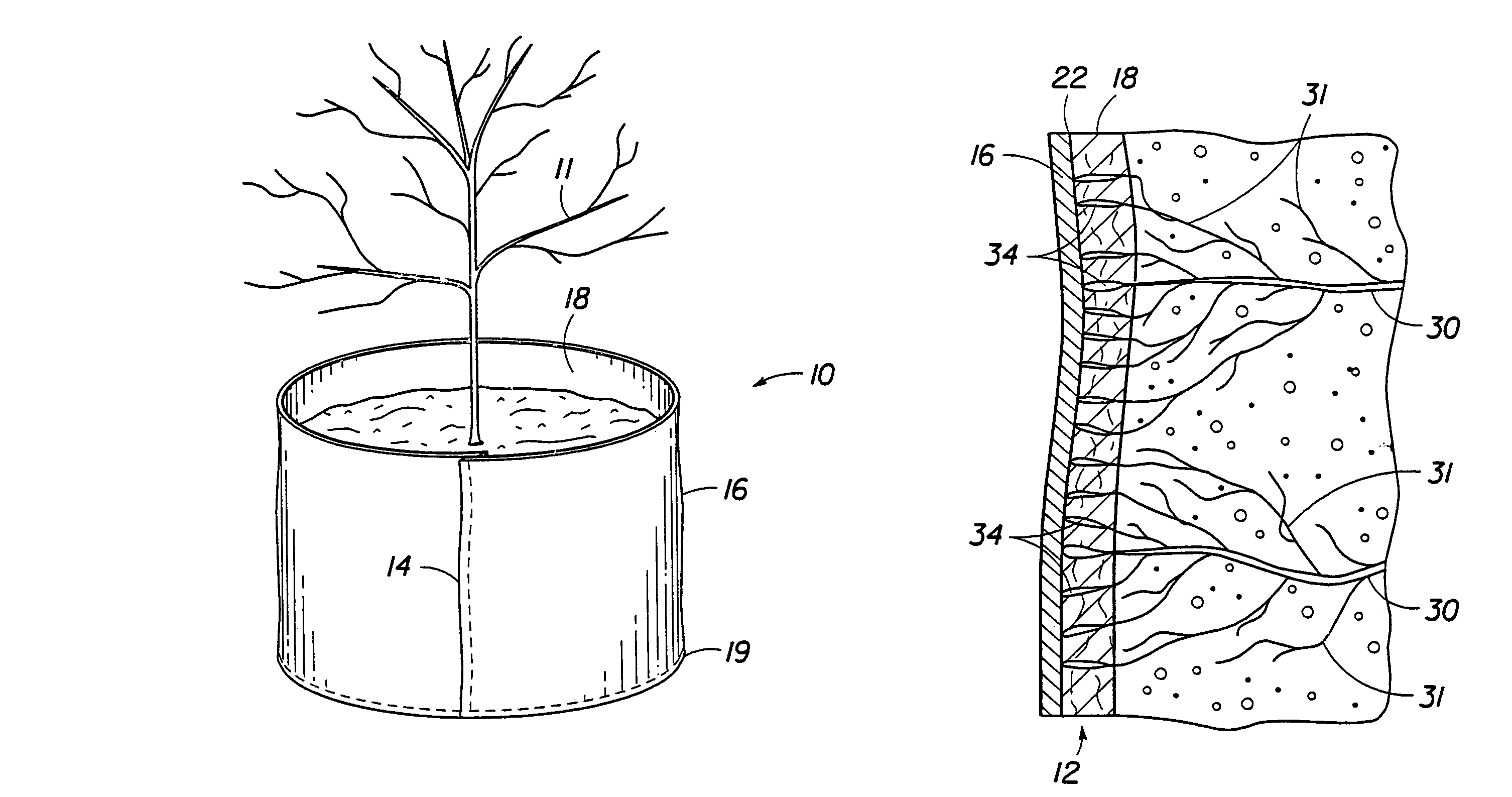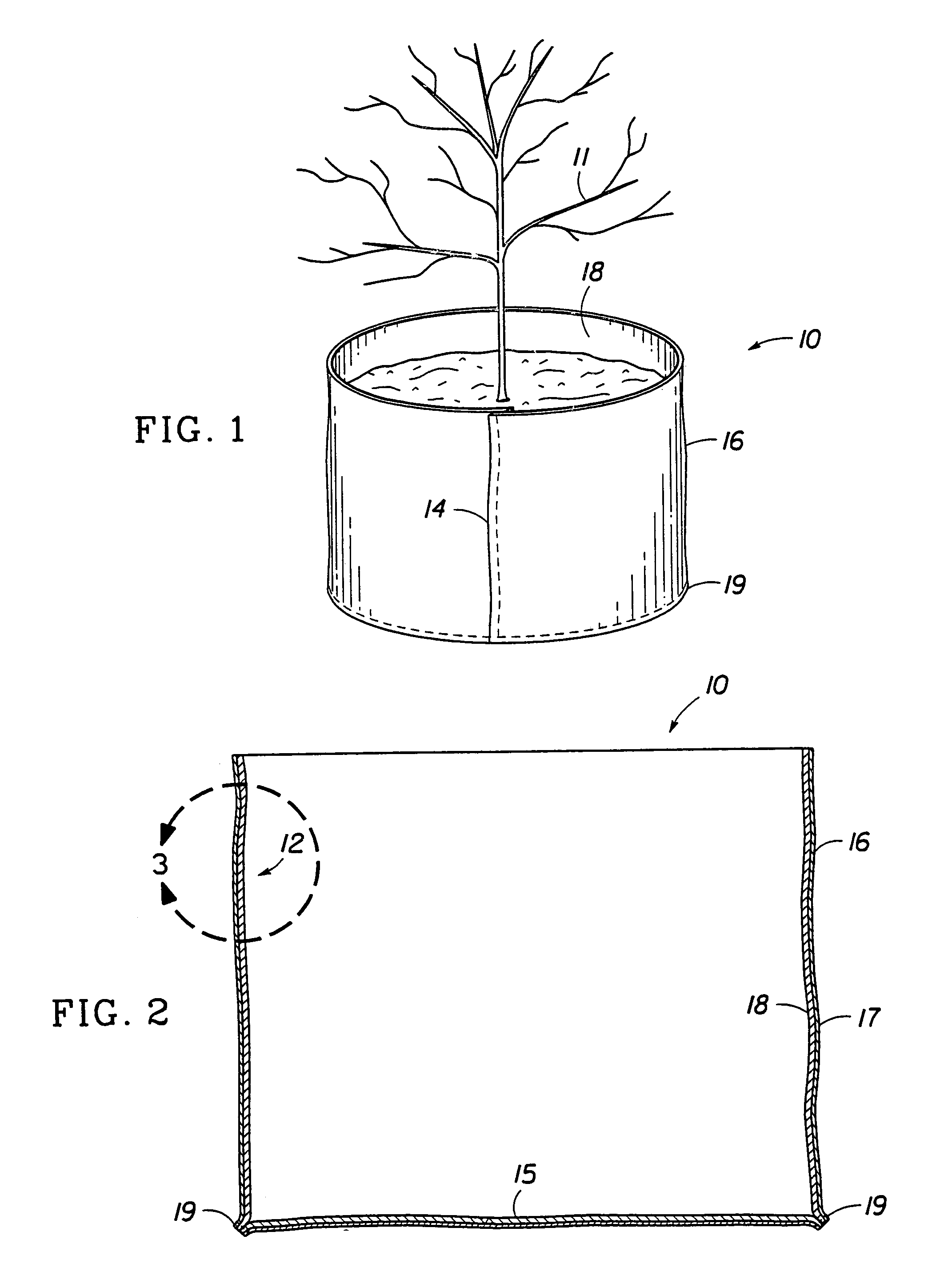Root growth barrier and method
- Summary
- Abstract
- Description
- Claims
- Application Information
AI Technical Summary
Benefits of technology
Problems solved by technology
Method used
Image
Examples
example 1
Oak Tree Growth
[0038]Twenty oak tree seedlings of uniform size and the same age were selected. On Jul. 14, 2001, these seedlings were placed into white containers formed by sewing together a layer of 3 mil white polyethylene laminated onto a layer of 6 oz. per square yard spun bonded needle punched fabric. The fabric was sewn into a cylindrical wall container, having a flat circular floor, where the spun bonded fabric faced inwardly along both the wall and floor. Ten of the seedlings were placed in such containers, with the growth medium juxtaposed against the inner fabric layer. The other ten seedlings were placed in the same type containers, but with a smooth clear plastic barrier imposed between the growth medium and the inner fabric layer. All twenty plants were watered as needed and grown under identical soil and lighting conditions. Temperature conditions were highly variable, characteristic of North Central Oklahoma during the summer. On August 22, the seedlings were again me...
example 2
[0039]On Jun. 14, 2001, containers made of a root growth barrier in accordance withFIGS. 1-3, including a white outer layer, were filled with a growth medium and young catalpa trees were planted. At the same time, conventional black plastic containers, as used in the nursery industry, were filled with growth medium and catalpa trees were planted. During the summer, temperatures on the inside of the container wall, where root tips would contact, were monitored. Two examples are given. On Jul. 22, 2001, the ambient air temperature was 104° Fahrenheit. The soil temperature in the containers formed by the root growth barrier with a white external coating was 108° Fahrenheit. The soil temperature in the black plastic pots was 126° Fahrenheit. On Aug. 9, 2001, the ambient air temperature was 105° Fahrenheit. The soil temperature in the containers formed by the root growth barrier with a white external coating was 112° Fahrenheit. The soil temperature in the black plastic p...
example 3
Root Branching
[0040]On Jul. 18, 2001, oak, elm, maple and catalpa trees were planted in 5-inch diameter containers comprising the root growth barrier of Example 1. They were grown in these containers until Aug. 27, 2001. Root density was found to be exceptionally high, and roots were trapped on the order of about 100 root tips per square inch.
PUM
 Login to View More
Login to View More Abstract
Description
Claims
Application Information
 Login to View More
Login to View More - R&D
- Intellectual Property
- Life Sciences
- Materials
- Tech Scout
- Unparalleled Data Quality
- Higher Quality Content
- 60% Fewer Hallucinations
Browse by: Latest US Patents, China's latest patents, Technical Efficacy Thesaurus, Application Domain, Technology Topic, Popular Technical Reports.
© 2025 PatSnap. All rights reserved.Legal|Privacy policy|Modern Slavery Act Transparency Statement|Sitemap|About US| Contact US: help@patsnap.com



